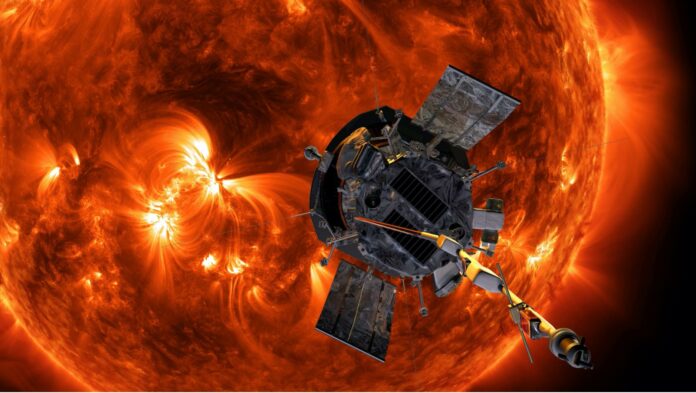The Parker Solar Probe (PSP) mission provides a unique opportunity to observe the solar corona from distances. Recently, NASA‘s Parker Solar Probe passed through a massive solar eruption. Moreover, it also captured the first up-close footage of a solar explosion.
Scientists at Johns Hopkins Applied Physics Laboratory shared the video featuring an especially powerful coronal mass ejection (CME) on Sept. 5, 2022. This journey of Parker Solar Probe through the CME is helping to prove a 20-year-old theory about the interaction of CMEs with interplanetary dust.
Massive eruptions from the Sun‘s corona, or outer atmosphere, known as CMEs, contribute to space weather, which can put satellites in danger, interfere with communications and navigation systems, and even bring down power grids on Earth.
Guillermo Stenborg, an astrophysicist at the Johns Hopkins Applied Physics Laboratory (APL) in Laurel, Maryland, said, “These interactions between CMEs and dust were theorized two decades ago, but had not been observed until Parker Solar Probe viewed a CME act like a vacuum cleaner, clearing the dust out of its path.”
Parker’s in-situ observations were crucial to this discovery because it is challenging to characterize dust dynamics in the wake of CMEs from a distance. According to the researchers, Parker’s observations may also shed light on associated coronal phenomena occurring lower in the corona, like coronal darkening brought on by low-density regions that frequently emerge after CME eruptions.
The interaction between the CME and dust was detected by scientists as a reduction in brightness in images taken by Parker’s Wide-field Imager for Solar Probe (WISPR) camera. This is because interplanetary dust scatters light and increases brightness in its vicinity.
The scientists had to compute the average background brightness of WISPR images over several identical orbits to pinpoint this specific case of decreased brightness, filtering out common brightness variations by solar streamers and other changes in the solar corona.
Stenborg said, “Parker has orbited the Sun four times at the same distance, allowing us to compare data from one pass to the next very well. By removing brightness variations due to coronal shifts and other phenomena, we were able to isolate the variations caused by dust depletion.”
Stenborg and the team speculate that dust depletion may only happen with the most potent CMEs because scientists have only noticed this effect in connection with the Sept. 5 event.
However, understanding the physics behind this interaction may have significance for forecasting space weather. Interplanetary dust influences the shape and speed of a CME, something that scientists are only now beginning to comprehend. To further understand these relationships, however, more research is required.
Journal Reference:
- Guillermo Stenborg, Evangelos Paouris, Russell A. Howard, Angelos Vourlidas and Phillip Hess. Investigating Coronal Holes and CMEs as Sources of Brightness Depletion Detected in PSP/WISPR Images. The Astrophysical Journal. DOI 10.3847/1538-4357/acd2cf
